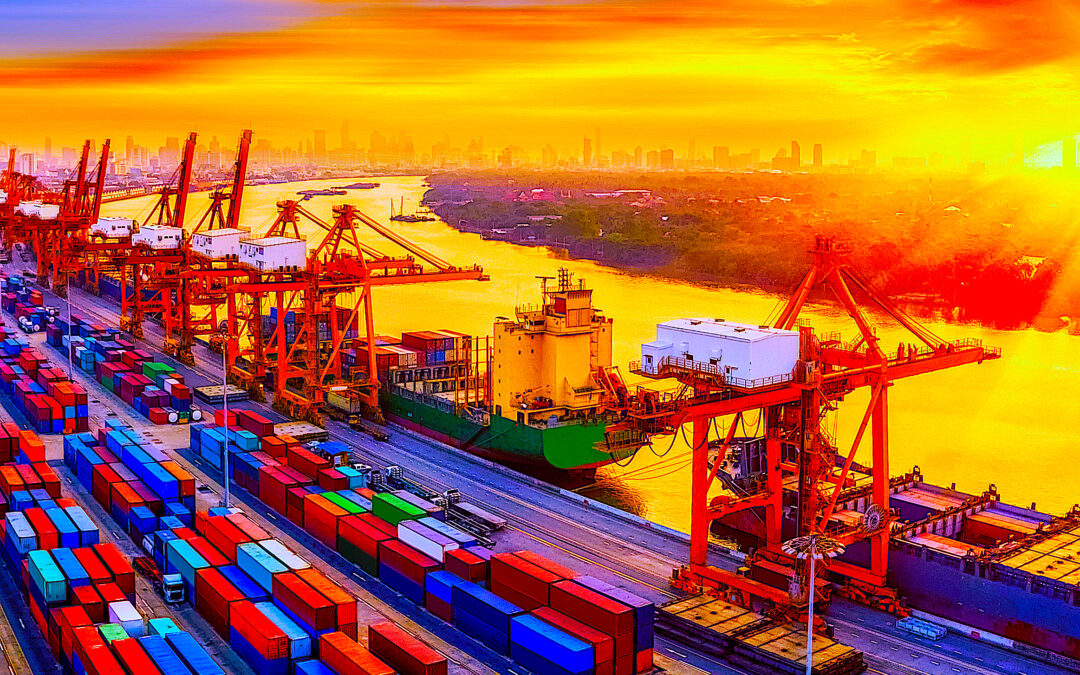For most organizations, the focus of environmental analysis and associated preventive and mitigative measures has been on what happens in the manufacturing or process plant. Traditionally, this is accomplished utilizing Environmental Impact Analysis (EIA). This type of analysis is an important aspect of environmental management because, for most industrial facilities, the plant is where you have the greatest degree of impact and control. Once the scope of environmental management expands beyond the four walls of the plant, though, everything becomes more complicated and more challenging to manage.
With consumers expressing concern about global warming, oceanic “dead-zones,” unusual weather patterns that many scientists assert can be tied to climate change, global pandemics, and a host of other issues, we in the RAM arena will increasingly be held to account for supply-chain elements that fall outside our direct sphere of control, but most certainly lie within our sphere of influence. That means we must understand these societal pressures and be able to contribute as part of the solution from a plant-asset-management perspective. Accordingly, we must take responsibility up and down the supply chain and the life cycle of our production output.
WE MUST THINK BEYOND THE PLANT
Most of us have heard the phrase “think globally and act locally.” Unfortunately, that may no longer be an adequate approach. As major intermediaries in the supply chain connecting raw materials to finished goods and services that are ultimately consumed, we may be expected to “act locally and lead and/or influence globally.” There’s a lot to unpack in that statement, so let me explain.
When we conduct an EIA, we generally neglect environmental impacts upstream of plant operations. We’ll receive pumps, motors, gearboxes, energy, etc., from various suppliers and sources and conclude that it’s the responsibility of the suppliers to manage their impacts. Right? While that would certainly make life easier in end-user plants or business units, we actually may be held to account for those upstream impacts.
In short, society may not be willing to overlook the fact that we purchased input materials from suppliers that exploited child labor or extracted or converted material inputs utilizing environmentally unsustainable methods. As an example, one need only look at Nike. That brand took a major hit with regard to child-labor practices. The message is this: Markets are becoming increasingly intolerant of developing companies exporting their adverse ecological and sociological impacts to developing countries and populations.
GO DURABLE, NOT DISPOSABLE
Another important topic for organizations in the manufacturing and process industries is planned obsolescence. From a marketing and revenue perspective, I certainly see the benefits of planned obsolescence. When one designs and manufactures goods to be unrepairable and, therefore, non-durable, it can be great for revenue. So, markets are trained to view washers and dryers, consumer electronics, and countless other products as disposable items. But, the strategy of producing, marketing, and selling disposable products that could be durable puts huge demands on raw-material extraction, energy, and landfills, among other things.
Herman Daly, an ecological economist, summed up the situation very clearly. Traditionally, economists have viewed the environment as an input to the economy, and manufacturers have exploited the ecosystem services provided by the environment as though they are free and unlimited. Daly argues that this is flawed logic. The ecosystem services that provide clean water, clean air, and healthy and productive land are certainly not free. And they’re absolutely not unlimited. Sadly, we’re seeing a growing amount of evidence in support of Daly’s assertions.
NO EXCUSES FOR EXPORTING IMPACTS
Organizations in the U.S. and other developed countries are increasingly held to account for business practices that exploit the environment and underprivileged societies. And responsibility absolutely extends beyond the four walls of our plants. As asset management or reliability professionals, we must act locally, but understand influences and make decisions that are fair and equitable globally.TRR
ABOUT THE AUTHOR
Drew Troyer has 30 years of experience in the RAM arena. Currently a Principal with T.A. Cook Consultants, he was a Co-founder and former CEO of Noria Corporation. A trusted advisor to a global blue chip client base, this industry veteran has authored or co-authored more than 250 books, chapters, course books, articles, and technical papers and is popular keynote and technical speaker at conferences around the world. Drew is a Certified Reliability Engineer (CRE), Certified Maintenance & Reliability Professional (CMRP), holds B.S. and M.B.A. degrees, and is Master’s degree candidate in Environmental Sustainability at Harvard University. Contact him directly at 512-800-6031 or dtroyer@theramreview.com.
Tags: reliability, availability, maintenance, RAM, environmental sustainability, sustainable manufacturing, energy efficiency, safety, climate change, sustainable investment, sustainability performance



